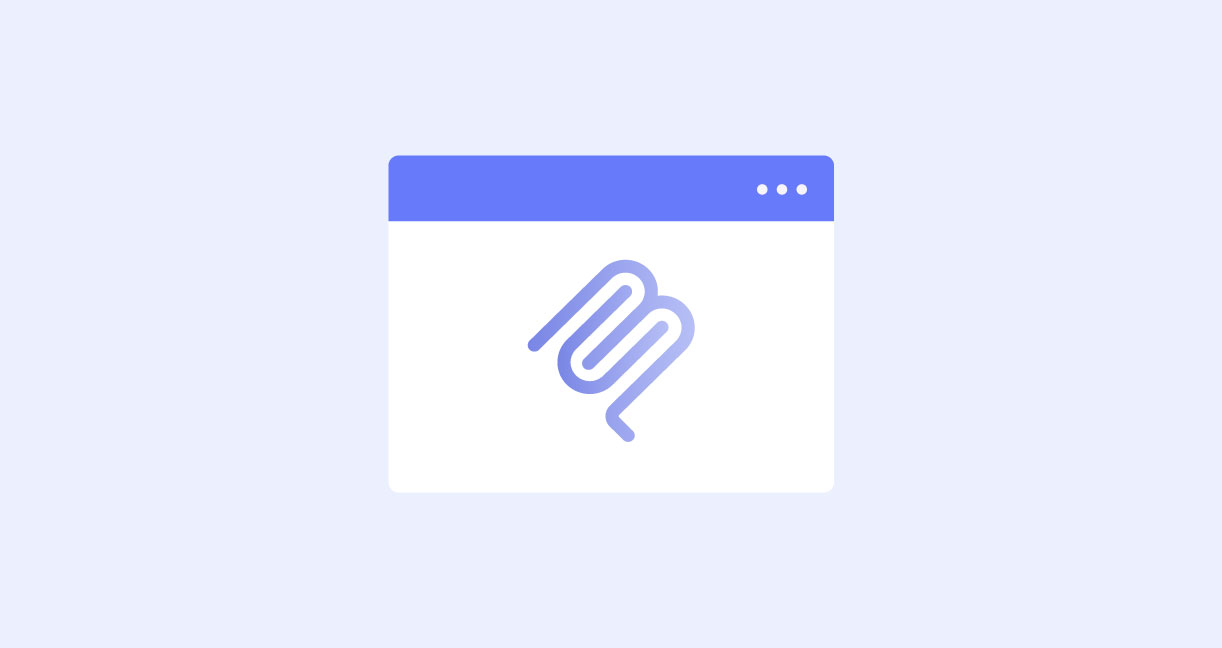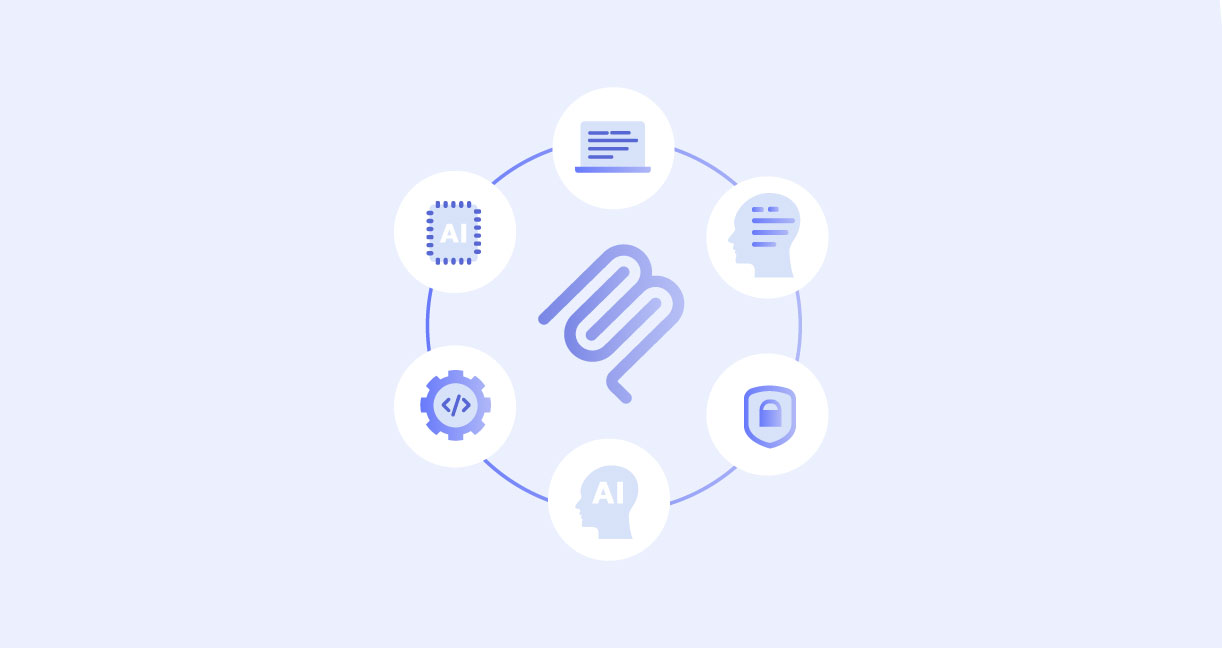Playbook: MCP Deployment and AI Integration
10 December 2025

10 December 2025

9 December 2025

4 December 2025
This Data Processing Agreement and its Annexes reflect the parties’ agreement with respect to the Processing of Personal Data on behalf of _______ ("Customer") in connection with the Services provided by Knostic, Inc. and its Affiliates ("Knostic") under the terms of the agreement signed between Knostic and Customer (the "Agreement").
This DPA is supplemental to the Agreement and is incorporated into it by reference. In case of any conflict or inconsistency with the terms of the Agreement, the terms of this DPA will take precedence. The duration of this DPA will follow the Term of the Agreement. Defined terms not otherwise defined in this DPA will have the meaning as set forth in the Agreement.
"Affiliate" means any entity that directly or indirectly controls, is controlled by, or is under common control with another entity. For purposes of this definition, "control" means direct or indirect ownership or control of more than 50% of the voting interests of the entity.
"Controller" means the natural or legal person, public authority, agency or other body which, alone or jointly with others, determines the purposes and means of the Processing of Personal Data.
"Data Privacy Framework" means the EU-U.S. Data Privacy Framework, the Swiss-U.S. Data Privacy Framework and the UK Extension to the EU-U.S. Data Privacy Framework self-certification programs (as applicable) operated by the U.S. Department of Commerce; as may be amended, superseded or replaced.
"Data Protection Laws" means all applicable worldwide legislation relating to data protection and privacy which applies to the respective party in the role of Processing Personal Data in question under the Agreement, including without limitation European Data Protection Laws, the CCPA and other applicable U.S. federal and state privacy laws, and the data protection and privacy laws of Australia, Singapore, and Japan, in each case as amended, repealed, consolidated or replaced from time to time.
"Data Subject" means the individual to whom Personal Data relates.
"Europe" means the European Union, the European Economic Area and/or their member states, Switzerland and the United Kingdom.
"European Data" means Personal Data that is subject to the protection of European Data Protection Laws.
"European Data Protection Laws" means data protection laws applicable in Europe, including the Regulation 2016/679 of the European Parliament and of the Council on the protection of natural persons with regard to the processing of personal data and on the free movement of such data (General Data Protection Regulation) ("GDPR"); EU Directive 95/64/EC as transposed into the legislation of each EU Member State in its current form, and other applicable national implementations in the European Economic Area (EEA), including the UK and Switzerland.
"Personal Data" means any information relating to an identified or identifiable individual where (i) such information is contained within Customer Data; and (ii) is protected similarly as personal data, personal information, or personally identifiable information under applicable Data Protection Laws.
"Personal Data Breach" means a breach of security leading to the accidental or unlawful destruction, loss, alteration, unauthorized disclosure of, or access to, Personal Data transmitted, stored or otherwise Processed by us and/or our Sub-Processors in connection with the provision of the Services. "Personal Data Breach" will not include unsuccessful attempts or activities that do not compromise the security of Personal Data, including unsuccessful log-in attempts, pings, port scans, denial of service attacks, and other network attacks on firewalls or networked systems.
"Processing" means any operation or set of operations which is performed on Personal Data, encompassing the collection, recording, organization, structuring, storage, adaptation or alteration, retrieval, consultation, use, disclosure by transmission, dissemination or otherwise making available, alignment or combination, restriction or erasure of Personal Data. The terms "Process", "Processes" and "Processed" will be construed accordingly.
"Processor" means a natural or legal person, public authority, agency or other body which Processes Personal Data on behalf of the Controller.
"Standard Contractual Clauses" means the standard contractual clauses annexed to the European Commission's Decision (EU) 2021/914 of 4 June 2021 currently found at https://eur-lex.europa.eu/eli/dec_impl/2021/914, as may be amended, superseded or replaced.
"Sub-Processor" means any Processor engaged by us or our Affiliates to assist in fulfilling our obligations under the Agreement.
2.1. Role of the Parties
2.2. Compliance With Laws
Customer shall inform Knostic without delay if it is unwilling or unable for any reason to comply with its responsibilities under this section or applicable Data Protection Laws, and inform Knostic of what measures it will undertake to remedy the non-compliance. If Customer is unable or unwilling to remedy this non-compliance, Knostic reserves the right to terminate this DPA or the Agreement as a result, and this termination shall be deemed as "for cause."
c. Without derogation from the general instruction set in this section, Knostic shall:
2.3. Processing Purposes and Instructions
3.1. Security Measures
Knostic will implement and maintain appropriate technical and organizational measures to protect Personal Data from Personal Data Breaches, as described under Annex 2 to this DPA ("Security Measures"). Notwithstanding any provision to the contrary, Knostic reserves the right to modify, update or otherwise reconfigure the Security Measures at its sole discretion, provided that such modifications or updates do not result in a material degradation in the protection offered by the Security Measures. If Knostic determines, in its sole discretion, that a material change in Security Measures is required, it will provide Customer with notice of the anticipated change, if circumstances permit, at least 10 days in advance of the implementation.
3.2. Compliance Assessments and Audits
3.3. Confidentiality
Knostic will employ reasonable efforts to ensure that any Knostic personnel authorized to access or Process Personal Data is subject to appropriate confidentiality obligations (whether a contractual or statutory duty) with respect to that Personal Data.
3.4. Personal Data Breaches
If Knostic becomes aware of any Personal Data Breach, it will notify Customer without undue delay and will provide timely information relating to the Personal Data Breach as it becomes known or reasonably requested by Customer. If Customer is required by applicable Data Protection Laws to issue notices of Personal Data Breaches, Knostic will, at Customer's request, provide reasonable assistance as necessary to enable the notification of relevant competent authorities or affected Data Subjects of the Personal Data Breach.
3.5. Deletion or Return of Personal Data
Knostic will delete or return all Customer Data, including Personal Data (including copies thereof) Processed pursuant to this DPA, on termination or expiration of the Agreement. This term will apply except where Knostic is required by applicable law to retain some or all of the Data, or where Knostic has archived Data on back-up systems, which are securely isolated and protected from any further Processing, and will be deleted in accordance with Knostic's deletion practices.
1. List of Parties
| Name | The Customer, as defined in the Agreement |
| Address | The Customer's address, as defined in the Agreement |
| Contact person's name, position and contact details | The Customer's contact details, as defined in the Agreement |
| Activities relevant to the data transferred under these Clauses | Processing of Personal Data in connection with the fulfilment of the Agreement |
| Role | Controller (either as the Controller; or acting in the capacity of a Controller, as a Processor, on behalf of another Controller) |
| Name | Knostic, Inc. |
| Address | 205 Van Buren St., Suite 120, Herndon VA 20170, USA |
| Contact person's name, position and contact details | Jonathan Braverman, Chief of Staff to the CEO, contact@knostic.ai |
| Activities relevant to the data transferred under these Clauses | Processing of Personal Data in connection with the fulfilment of the Agreement |
| Role | Processor |
2.1. Categories of Data Subjects whose Personal Data is Transferred
The Personal Data transferred by Customer to Knostic concern the following categories of Data Subjects:
2.2. Categories of Personal Data Transferred
2.3 Sensitive Data transferred and applied restrictions or safeguards
The processing of Sensitive Data is subject to the scope limitations, restrictions, and safeguards mutually agreed upon by the parties, as reflected in the Agreement.
2.4. Frequency of the transfer
Continuous
2.5. Nature of the Processing
Personal Data will be Processed in accordance with the Agreement (including this DPA). The parties may mutually agree, in writing, to amend this Annex.
2.6. Purpose of the transfer and further processing
Personal Data will be Transferred and further Processed in accordance with the Agreement (including this DPA). The parties may mutually agree, in writing, to amend this Annex.
2.7. Period for which Personal Data will be retained
Personal Data will be retained (and disposed of) in accordance with the Agreement (including this DPA). The parties may mutually agree, in writing, to amend this Annex.
We currently observe the Security Measures described in this Annex.
We maintain and adhere to an internal, written Information Security Policy.
2.1. Preventing Unauthorized Product Access
Outsourced processing: We host our Service with outsourced cloud infrastructure providers. Additionally, we maintain contractual relationships with vendors in order to provide the Service in accordance with our DPA. We rely on contractual agreements, privacy policies, and vendor compliance programs in order to protect data processed or stored by these vendors.
Physical and environmental security: We host our product infrastructure with multi-tenant, outsourced infrastructure providers. We do not own or maintain hardware located at the outsourced infrastructure providers' data centers. Production servers and client-facing applications are logically and physically secured from our internal corporate information systems.
Authentication: We implement a uniform password policy for our customer products. Customers who interact with the products via the user interface must authenticate before accessing non-public customer data.
Authorization: Customer Data is stored in multi-tenant storage systems accessible to Customers via only application user interfaces and application programming interfaces. Customers are not allowed direct access to the underlying application infrastructure. The authorization model in each of our products is designed to ensure that only the appropriately assigned individuals can access relevant features, views, and customization options. Authorization to data sets is performed through validating the user's permissions against the attributes associated with each data set.
Application Programming Interface (API) access: Public product APIs may be accessed using Oauth authorization or private app tokens.
2.2. Preventing Unauthorized Product Use
We implement industry standard access controls and detection capabilities for the internal networks that support its products.
Access controls: Network access control mechanisms are designed to prevent network traffic using unauthorized protocols from reaching the product infrastructure. The technical measures implemented differ between infrastructure providers and include Virtual Private Cloud (VPC) implementations, security group assignment, and traditional firewall rules.
Intrusion detection and prevention: We implement a Web Application Firewall (WAF) solution to protect hosted customer websites and other internet-accessible applications. The WAF is designed to identify and prevent attacks against publicly available network services.
Code analysis: Code stored in our source code repositories is checked for best practices and identifiable software flaws using automated tooling.
Endpoint Security: Endpoints are hardened in accordance with industry standard practice. Workstations are protected using anti-malware and endpoint detection & response tools, receiving regular definition and signature updates.
2.3. Limitations of Privilege & Authorization Requirements
Privileged Access Management: Privileged access in our product environment is controlled, monitored, and removed in a timely fashion through just in time access (JITA) controls. Non-personal accounts used for system access are stored in a secure vault with additional controls governing privilege elevation and account check out processes.
In-transit: We require HTTPS encryption (also referred to as SSL or TLS) on all login interfaces. Our HTTPS implementation uses industry standard algorithms and certificates.
At-rest: We store user passwords following policies that follow industry standard practices for security. We take a layered approach of at-rest encryption technologies to ensure Customer data and Customer-identified Permitted Sensitive Data are appropriately encrypted.
Incident Response Plan: We maintain a written Incident Response Plan and other necessary processes and procedures to fulfill the standards and obligations reflected in said plan.
Detection: We designed our infrastructure to log extensive information about the system behavior, traffic received, system authentication, and other application requests. Internal systems aggregate log data and alert appropriate employees of malicious, unintended, or anomalous activities. Our personnel, including security, operations, and support personnel, are responsive to known incidents.
Response and tracking: We maintain a record of known security incidents that includes description, dates and times of relevant activities, and incident disposition. Suspected and confirmed security incidents are investigated by security, operations, or support personnel; and appropriate resolution steps are identified and documented. For any confirmed incidents, we will take appropriate steps to minimize product and Customer damage or unauthorized disclosure. Notification to you will be in accordance with the terms of the Agreement.
Infrastructure availability: The infrastructure providers use commercially reasonable efforts to ensure a minimum of 99.95% uptime.
Fault tolerance: Backup and replication strategies are designed to ensure redundancy and fail-over protections during a significant processing failure. Customer data is backed up to multiple durable data stores and replicated across multiple availability zones.
Online replicas and backups: Where feasible, production databases are designed to replicate data between no less than 1 primary and 1 secondary instance. All databases are backed up and maintained using at least industry standard methods.
Disaster Recovery Plans: We maintain and regularly test disaster recovery plans to help ensure availability of information following interruption to, or failure of, critical business processes.
Vulnerability Remediation Schedule: We maintain a vulnerability remediation schedule aligned with industry standards. We take a risk-based approach to determining a vulnerability's applicability, likelihood, and impact in our environment.
Vulnerability scanning: We perform daily vulnerability scanning on our products using technology and detection standards aligned with industry standards.
Penetration testing: We maintain relationships with industry-recognized penetration testing service providers for penetration testing at least annually. The intent of these penetration tests is to identify security vulnerabilities and mitigate the risk and business impact they pose to the in-scope systems.
We staff qualified personnel to develop, maintain, and enhance our security program. We train all employees on security policy, processes, and standards relevant to their role and in accordance with industry practice.
Background checks: Where permitted by applicable law, Knostic employees undergo a background or, at a minimum, a reference check. All employees are required to conduct themselves in a manner consistent with company guidelines, non-disclosure requirements, and ethical standards.
Knostic relies on various Sub-Processors to enable access to the following for proper execution:
Sub-Processor |
Region |
Additional Information |
| AWS | US for US customers, otherwise EU |
|
| Descope | US for US customers, otherwise EU | Authentication service |
| Cloudflare | Global | |
| Bugsnag | US | Client-side UI telemetry |
| Azure OpenAI | US for US customers, otherwise EU | No data is retained |
| Groundcover | US for US customers, otherwise EU | Log data is stored on Knostic AWS cloud |
Version 1.0 – August 2024
United States
205 Van Buren St,
Herndon, VA 20170
Get the latest research, tools, and expert insights from Knostic.